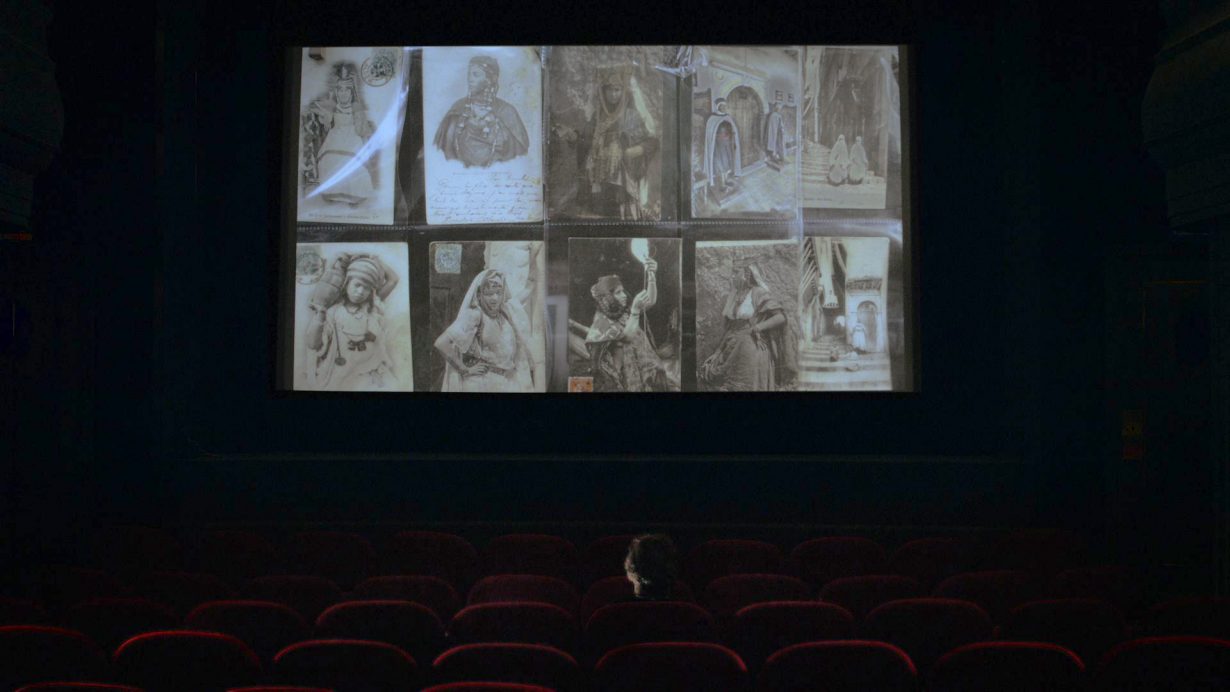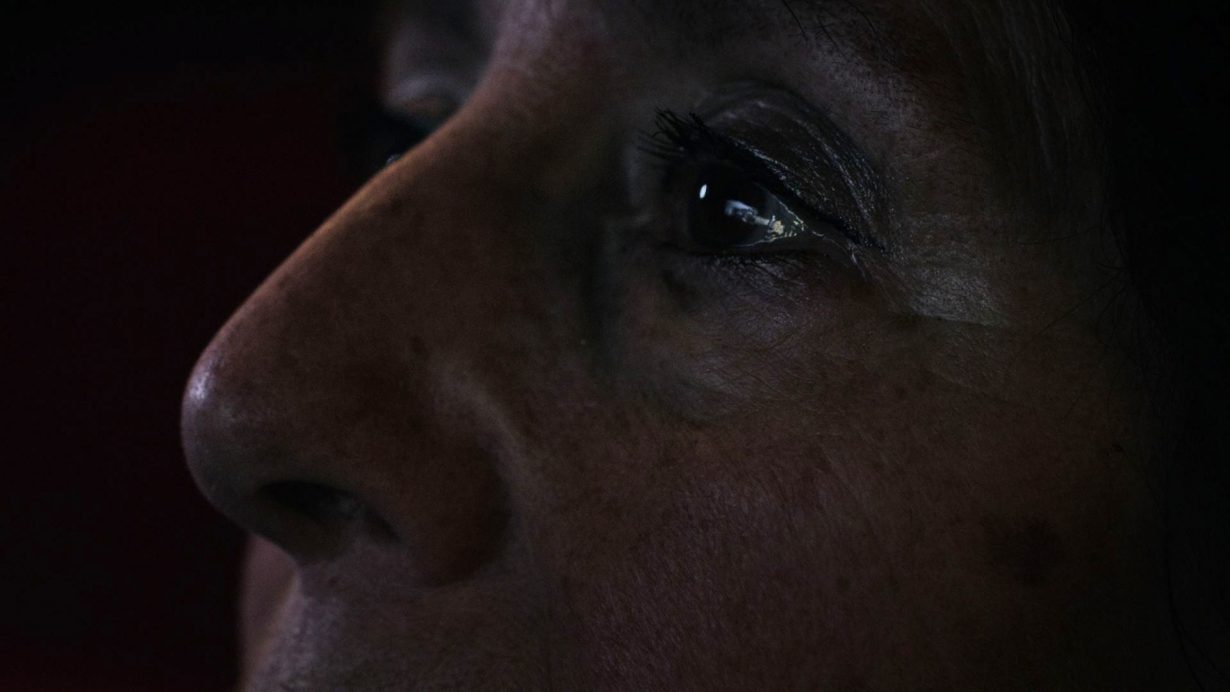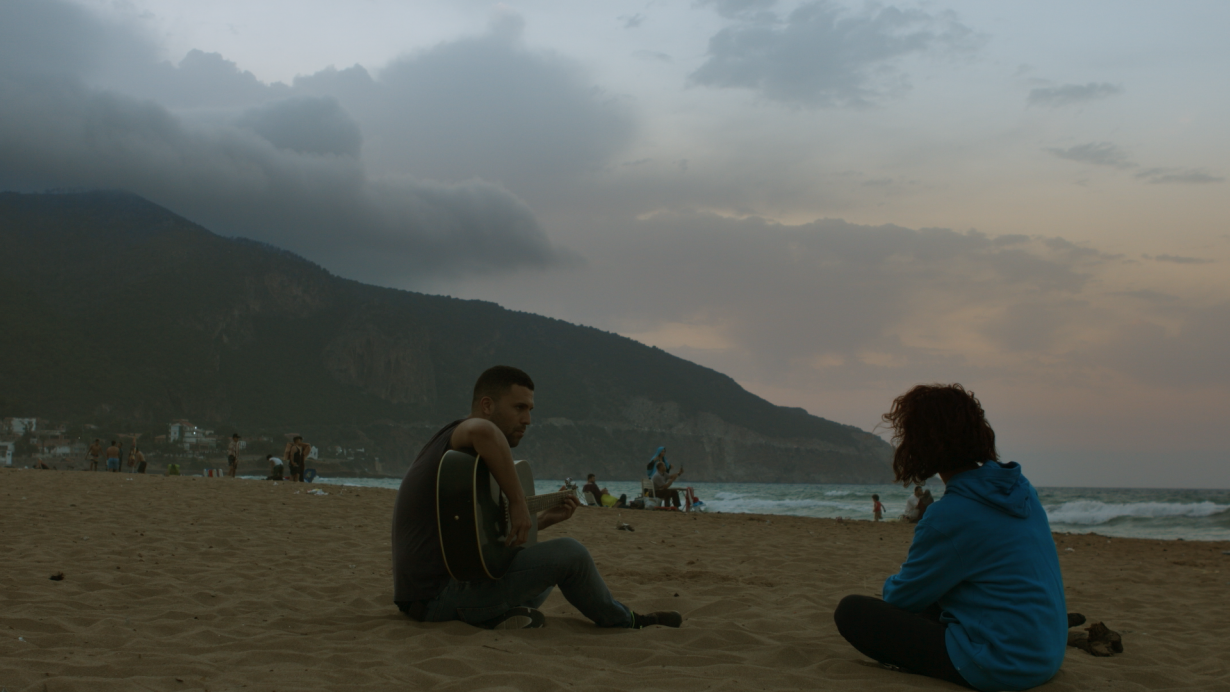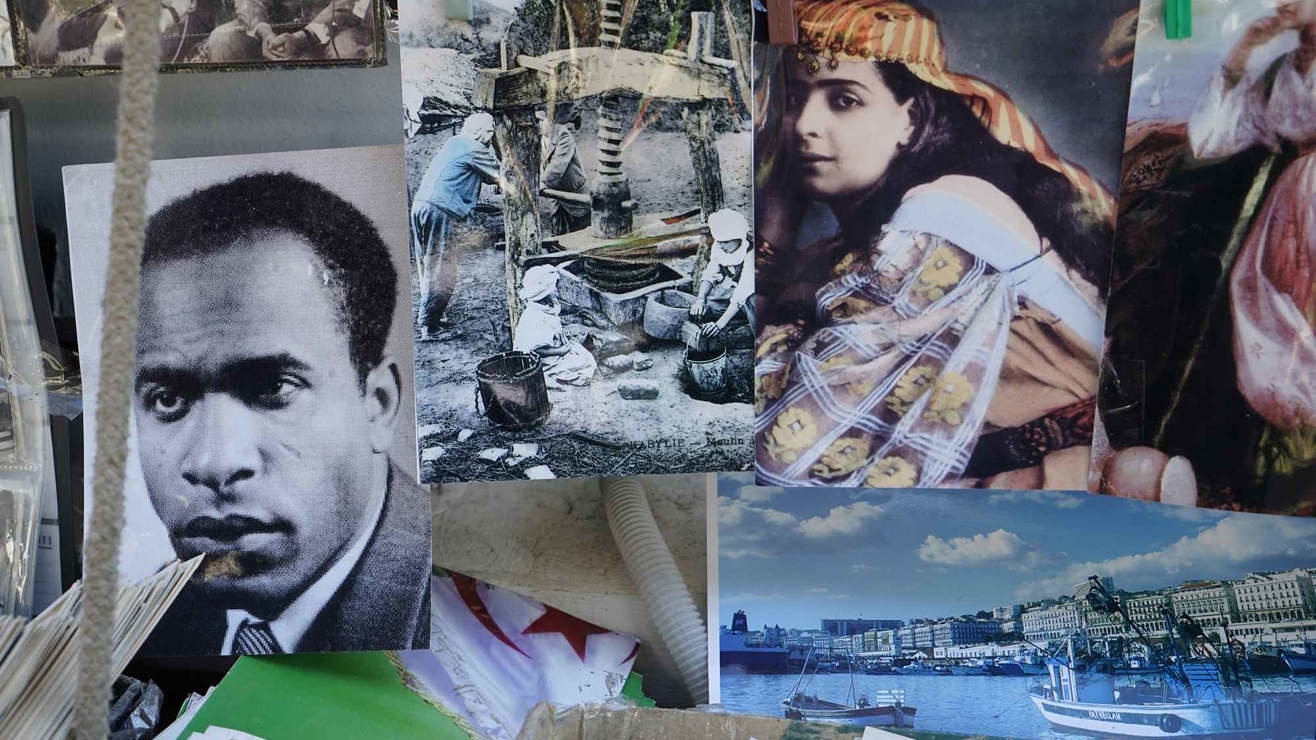The artist’s documentary video trilogy, The Algerian Novel, seeks to tell a visual history of the unseen and the unspoken
‘There is not occupation of territory, on the one hand, and independence of persons on the other,’ radical theorist Frantz Fanon wrote in A Dying Colonialism (1959), to describe what violence settler colonialism did to Algerians’ sense of self. ‘It is the country as a whole, its history, its daily pulsation that are contested, disfigured.’ This year, Algeria (and its former coloniser) celebrated 60 years since it reclaimed its independence, and while the trauma of colonisation is giving way to a more peaceful memory, the country’s ensuing attempts at a nation-building project have been plagued by corrupt politicians, military interference, censorship – and a bloody civil war. Decades of regressive and repressive politics led to an unprecedented countrywide protest movement, the Hirak, which in 2019 took to the streets to oppose President Abdelaziz Bouteflika’s candidacy for a fifth presidential term and demand the reform of the whole political system into a democratic one. The contested election of Abdelmadjid Tebboune as president that same year has resulted in an increased crackdown on the movement, with the arrest of hundreds of activists, journalists and politicians.
This conflicted relationship of Algerians to their postcolonial history and the country’s ongoing identity crisis pulses through Franco-Algerian artist Katia Kameli’s documentary video trilogy Le Roman algérien (The Algerian Novel). Presented in Kameli’s survey show, Elle a allumé le vif du passé, at Marseille’s FRAC last summer as a three-screen installation, the work felt like a remarkable attempt at representing – both in form and content – this complex history and the way national narratives continue to shape the present. Shot between 2017 and 2019 – during the early stages of the Hirak – it starts in the streets of Algiers, where, since 1986, a makeshift kiosk stands as an unofficial historical guide to Algeria’s past. Pegged on the barred windows of a building is a mosaic of vintage black-and-white and colour postcards and reproductions of historical photographs, among them images of the city during the colonial era and representations of Algerian women in traditional Bedouin or Berber outfits. These are displayed alongside portraits of male politicians, including a young Bouteflika, Fanon and other heroes of the Front National de Libération (FNL), the revolutionary movement that led the liberation war.
The first chapter explores this archival display as generative of discourse, through interviews with locals, passersby and historians who offer fragments of national and personal histories. We see some of them scrutinising this wall of imagery, some pointing or leaning closer to examine a particular image, or enquiring about one with the kiosk’s owner, or simply reminiscing with relatives or friends. “Why is there an opportunity for such a permanent stand in the centre of Algiers?” one woman wonders, observing that it is near to impossible to find current postcards of the city anywhere in Algiers (“We don’t get any tourists”). The answer might be found in some of the other comments, recorded and overlaid on closeup shots of the stand’s activities. “I know the names but not the faces, as there are no pictures in history books,” we hear one woman say in Arabic as she peruses an album of political portraits; a man, who introduces himself as a coin collector and a regular of the kiosk, tries to reclaim what’s depicted: “Eighty percent of what you see here is heritage – in spite of its colonial aspect, it’s Algerian”. Another woman, meanwhile, offers that the stand appeals because it “flatters our nationalism”.

The non-chronological display presented at the kiosk fills in some gaps but leaves others blank, attesting to a conflicted history marked by state censorship and collective trauma: one woman points to the difficulty of finding any images of the Algerian Civil War (1991–2002), a period that came to be known as the ‘Dark Decade’ as a result of the brutality and terror that defined a conflict between the government and various rebel Islamist groups. Meanwhile, postcards being a colonial import, there are only a handful of representations of precolonial buildings or views of the city as it was before its transfiguration during 132 years of occupation.
Another glaring absence in the national tapestry is that of female political figures, which Kameli seeks to redress in the subsequent chapters of her ‘novel’. Narrated by Marie-José Mondzain, an Algerian-born French art-historian and philosopher, the second chapter takes the form of a metacritique in which she offers commentary on the first film and unused interview rushes with two women: Algerian writer and feminist Wassyla Tamzali, and writer and former FNL member Louisette Ighilahriz. We watch her watching from a screening room – shot from behind in her velvet seat; standing by the screen, overlaid with the projection; or in a side closeup of her face, the glint of the screen reflected in her pupils – as she analyses this material, adding another narrative layer to this kaleidoscopic story.


The effect of this curious mise-en-abyme is reflexive and deconstructive: it invites a critical distance on the artist’s own work, while playfully mirroring the way images can generate different narratives and interpretations that aggregate in layers. Bringing an academic like Mondzain into this narrative exercise also reminds us that history and historiography are ever-evolving projects that need to be constantly renegotiated and questioned. The trilogy’s most apparent deconstructive impulse is its attempt to rewrite women’s role within the country’s history and collective imaginary. Their erasure from history, and iconography, is reflective of their political status as secondary citizens in Algerian society since the introduction of the 1984 ‘family code’, which placed them under the legal guardianship of their husbands and fathers. Although years of activism and pressure on the government led to a revision in 2005, the code – based on Sharia law – remains in place today. In the rest of the chapter, we watch with Mondzain as Tamzali offers sharp political analysis of historical photographs and introduces the stories of women revolutionaries such as Zohra Drif and Djamila Bouhired, while Ighilahriz’s testimony attests to the role of women in the diffusion of the first Algerian flag during the revolution, describing how, having glimpsed the flag on one occasion, they clandestinely reproduced versions of it from memory and distributed them to “mobilise our comrades”.
The flag, sewn together from different parts, becomes a metaphor, on the one hand, for the construction of a collective imagination through many voices and stories, and, on the other, for the cinematographic montage itself, as Mondzain observes in another reflexive layering of narratives. As photographs of protests from the revolutionary period come to the fore, the slight variations in different handmade flags become apparent, yet do not seem to alter the unifying potential of the emblem: “There are probably as many flags as there are Algerians,” Mondzain says, “yet they can probably only be brought together if the collective imaginary contains an ideal flag.”

More flags are waved, this time shot in colour, in the third chapter, where past and present history collide. Shot in 2019, it interlaces documentary footage of the early stages of the Hirak with another image-based dialogue between Mondzain and the photojournalist Louiza Ammi. The two unpack the narratives contained in Ammi’s images, who notably documented – illegally – the aftermath of massacres during the Dark Decade: a woman mourning amidst hundreds of freshly dug graves; a man looking up in horror as he covers the face of the woman alongside him, with carcasses of bombed cars around them and a police officer standing guard in the background; Mohamed Sahnoun, UN ambassador of Algeria, standing in the ruins of a bombed house, looking in disgust at what lies beyond the camera.
Building throughout the film is a tension between the public and the journalists they expect to be telling their stories. Ammi remembers that the day she took the photograph in the cemetery, a survivor unloaded on her, reproaching her for not having been there to bear witness to the massacre itself: “At the time there was only the private press,” Ammi says, adding that TV news stayed away from such events; “they preferred to open [the news headlines] with the death of Diana and didn’t talk about this”. Later in the film, Ammi is on a balcony taking snaps of the crowds of (mostly male) protesters flooding the avenue below, chanting slogans like, “You have built prisons, you will all end there!” The camera moves between Ammi and the crowd, and we see protesters look up with their fists raised – “Press! All Accomplices!” they shout – as Ammi waves her index finger in contestation. Not me, she seems to say, as though unconvinced of her ability to challenge a mistrust rooted in decades of state censorship.

Using montage to allow for narrative association, one sequence draws a connection between the figure of the late feminist novelist and filmmaker Assia Djebar and women activist groups today. Djebar, who worked with Fanon for the newspaper El Moudjahid documenting the life of women refugees in Tunisia and Morocco, is conjured here by images from her films and through the words of a cinema critic that, like Mondzain’s, function as a metadiscourse. “This is the first time we have seen the story of the war of liberation, told through the eyes, the testimonies of women,” he notes of The Nubah of the Women of Mount Chenoua (1977). “That’s her main idea, it’s to give back a body to memory… memory becomes a voice and a woman’s body.” Moving through a semiotic analysis of some of the symbols in her films, he notes how this particular film illustrates all the hope that Djebar had for the future of women, who had fought for equal rights during the revolution: “She thought that they were going to free themselves,” he says in a nostalgic tone, before adding, “There was no family code then.” The video cuts to a group of women protesting during the Hirak uprisings – one of many who call for a joint revolution, combining the demand for a democratic state with the fight for gender equality – holding up a banner featuring the faces of FNL women revolutionaries and feminist activists. They remind us that no revolution will be achieved without equality, and leave us with a feeling of gloom: yes, Djebar’s feminist legacy of resistance lives on, yet 50 years later the egalitarian, democratic Algeria she envisioned and fought for feels like a distant dream.
Kameli’s ‘novel’ is a reckoning with a troubled, messy history that is at once epic in its scope and understated in its delivery. The overall experience is a filmic equivalent to the situationist dérive, a sinuous journey that takes us through images, timelines and registers. The work’s historical impulse is arguably one shared by other contemporaries hailing from Algeria or its diaspora: Zineb Sedira’s exploration of Algerian post-revolution cinema at this year’s Venice Biennale comes to mind. But where Sedira’s film offers a reading of history seen through the personal and autobiographical, Kameli’s documentary-style collage of images and voices seems more concerned with the (de)construction of collective memory. Its rather unique metastructure, meanwhile, speaks to the critical potential that resides in the act of looking, and how it might offer resolution to a conflicted postcolonial identity – and, ultimately, a way out of the sociopolitical dead end in which the country now seems stuck.
Viewed three years after the Hirak, the third chapter has something of a bittersweet flavour – of failed revolutions, disillusionment and unrealised futures. Yet it also suggests that if the movement of history is relentless, so are people’s resilience and resistance. The Hirak might have dwindled under repression, but journalists continue to speak out, activists to protest and artists to make art. “My singing always speaks of freedom. I intercede for the women martyrs and for the living, may God relieve them of oppression!” recites the slam-poet Ibtissem Hattali in French in the final scene, as she and an accompanying guitarist sit on a beach at dusk. The words are taken from Djebar’s film, yet here her voice resonates with the collective voices of Algeria’s revolutions past and future, reuniting in one hymn the fate of women and the nation. Switching to Arabic, she intones: “A day will come when I will be free. I will be free.”
Kameli’s solo show Le Cantique des oiseaux (The Canticle of the Birds) is on view at La Criée Centre d’Art Contemporain, Rennes, until 28 August 2022
